UK Drive: The Honda e arrives to shake up the EV segment

What is it?
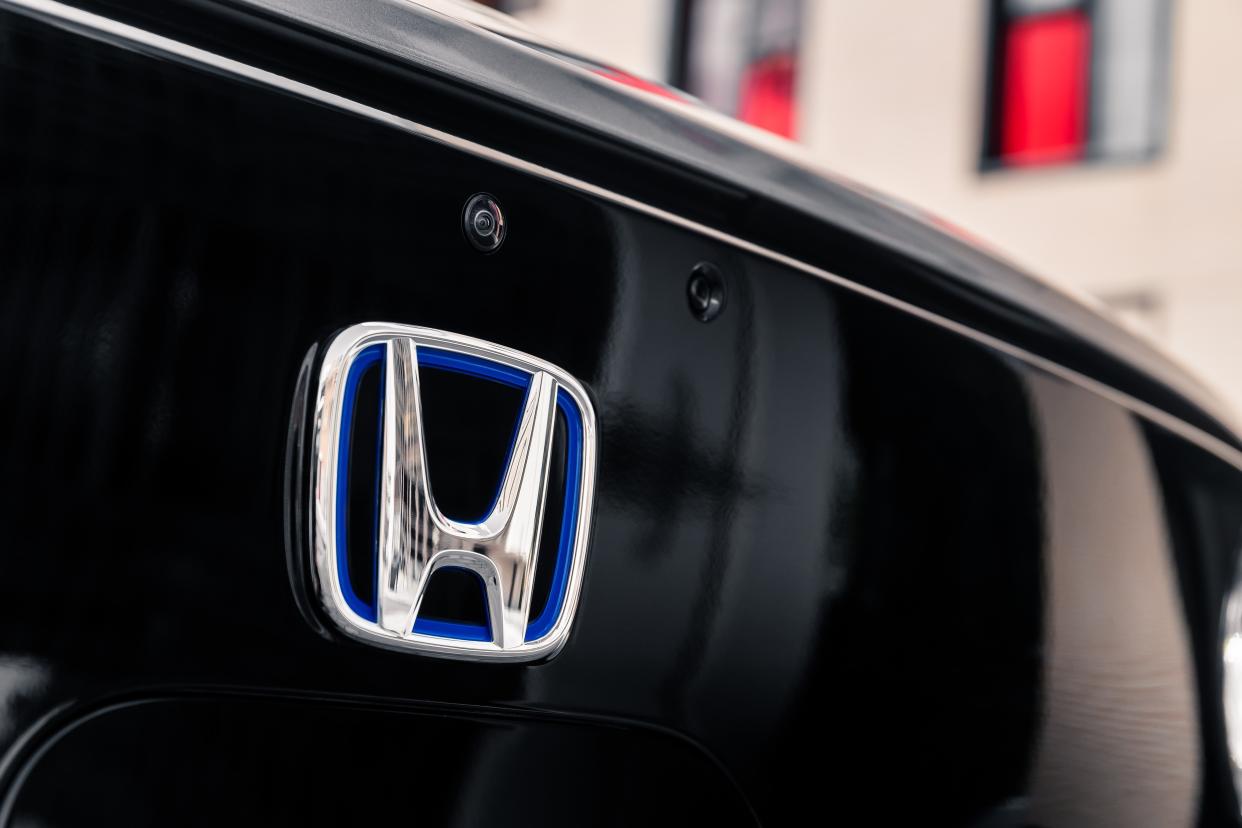
This is the new Honda e, and it’s what the Japanese manufacturer calls an ‘urban-commuter’ car, designed for those who are undertaking regular, but shorter journeys. So while you’ll find no headline-grabbing range or huge battery pack here, the e positions itself as a car which is more than happy at dealing with the day-to-day of driving.
The question is, is it any good? We’ve been out behind the wheel of the e to find out.
What’s new?
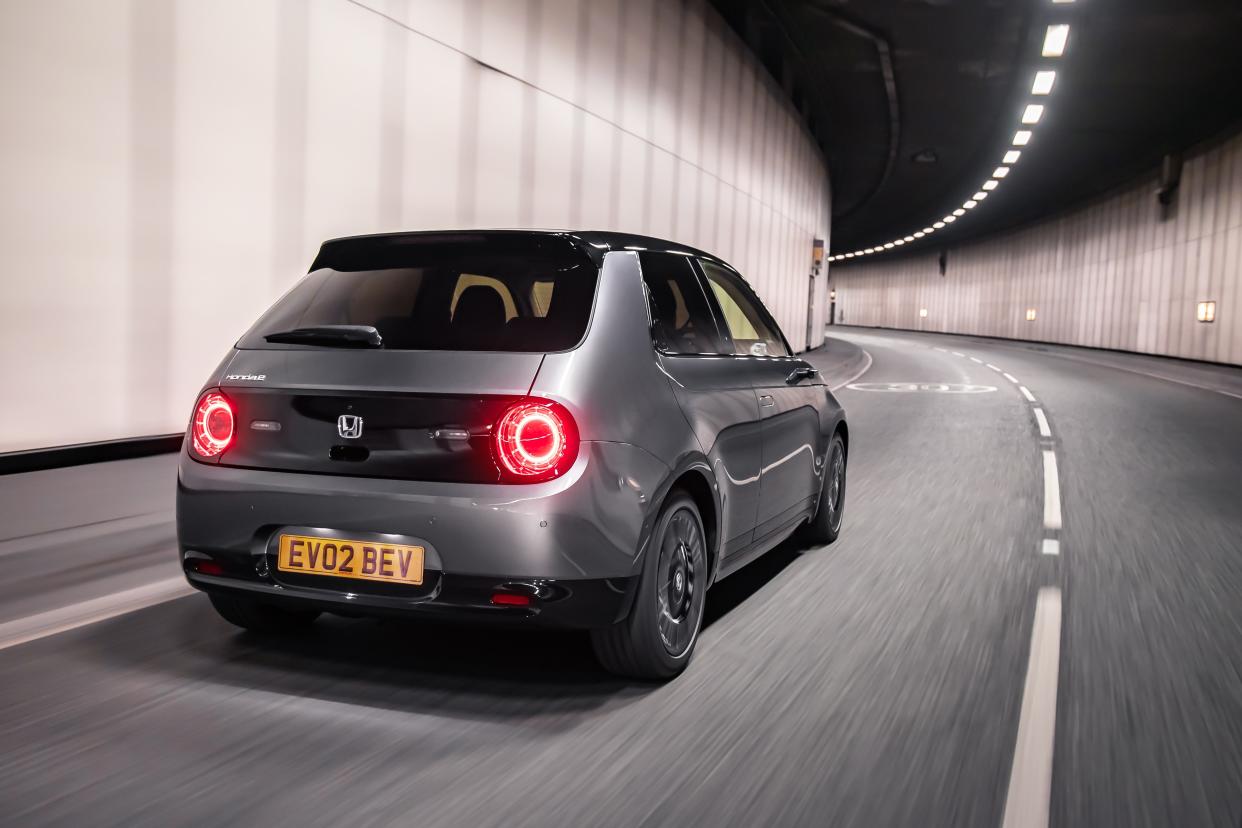
Make no bones about it, the Honda e is a completely new thing. You’ll find no platform sharing here, with the e underpinned by a bespoke platform unique to the dinky little Honda. So instead of being moulded around a preexisting base, the e has been designed from the ground up and this allows for a little more freedom when it comes to packaging.
So while the vast majority of EVs currently on sale are either front- or all-wheel-drive, the e sends power to the rear wheels. Why’s that? In order both free up space in the cabin and allow for a much smaller turning circle since the front wheels can turn to a much sharper angle without an engine or motor to compete for space with.
What’s under the bonnet?
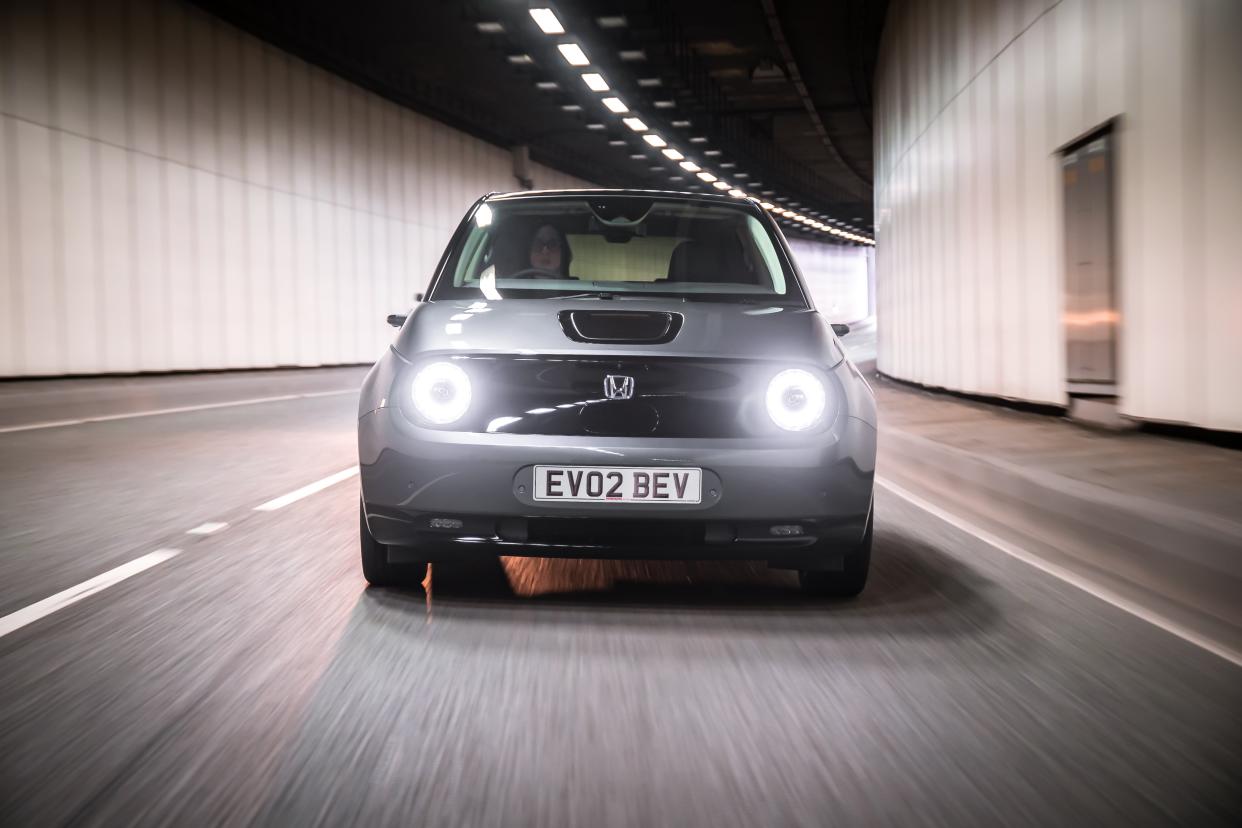
The Honda e uses an electric motor with 151bhp (or 113kW in EV-speak) which is powered by a 35.5kWh lithium-ion battery. It helps the e to go from 0-60mph in just under eight seconds, while flat-out it’ll do 100mph. Honda claims a range of 125 miles from a single charge; it’s a figure which is a fair bit under rival EVs, but likely to be enough for daily commutes.
Charging-wise, it’ll take just 31 minutes to complete a full charge via a 50kWh CCS fast charger, or 4.1 hours when using a standard AC home wallbox. Thinking of charging your e with a three-pin plug? That’ll take 18.8 hours. Given the speediness of a quick charge, however, it won’t take long to significantly boost the e’s range when out and about. The charging port is located on the front of the car too, underneath the black accent in the middle of the ‘bonnet’.
What’s it like to drive?
Take a glance at the e’s short overhangs, compact proportions and relatively brisk performance figures and it’s easy to see that it has been designed with the city in mind. And fortunately enough, it’s superb in urban environments. The acceleration is zippy and ideal for darting in and out of spaces, while the button-small turning circle makes u-turns an absolute breeze. Dinky dimensions will make it less of a headache to park in areas where spaces are at a premium, too.
Driving the new Honda e today. Properly cool looking thing pic.twitter.com/zrn2n5Jj4h
— Jack Evans (@jackrober) July 22, 2020
But there’s fun to be had here too. The steering, which is well weighted and positive, enables you to have fun in the corners while the rear-wheel-drive setup gives the e plenty of balance through the bends. Even out on the motorway it’s hushed and refined, while only the smallest amount of jarring was transferred through to the cabin, likely as a result of the 17-inch wheels fitted to our higher-spec test car.
A single pedal driving system means you rarely need to go near to the brake as the car’s regenerative system slows the car down. You can adjust how much regenerative braking you want, in fact, via the steering wheel-mounted paddles.
How does it look?

With its cutesy styling, you’ve got to say that Honda has nailed the tie-up between futuristic and retro with the e’s design. The way the front lights mirror the rears, the shortness of the overhangs and the rounded, ‘bubble’ nature of the way the e looks turns it into a real head-turner. During our time with the car, there were very few people who didn’t stop, stare and point at the green Honda as it went past.
Against rival offerings, it’s a genuinely exciting alternative and one we’re sure will be a hit with buyers. It’s a real testament to the original design that this road-going Honda looks close to identical to the concept we saw several years ago.
What’s it like inside?

The cabin of the e has been executed extremely well and though it’s dominated by technology (which we’ll get to shortly) the general standard of fit and finish is very good indeed. Wood trim pieces blend well with the high-tech elements, while the relatively high up driving position and flat dashboard allow you to have an extremely clear view of the road ahead. Visibility out of the back is good, too.
Space in the rear of the e isn’t bad for a car of this size, but because of the battery located at the rear of the car, the boot is quite small. At 171 litres it’s enough for a weekly shop, for sure, but not large enough for family’s luggage.
What’s the spec like?
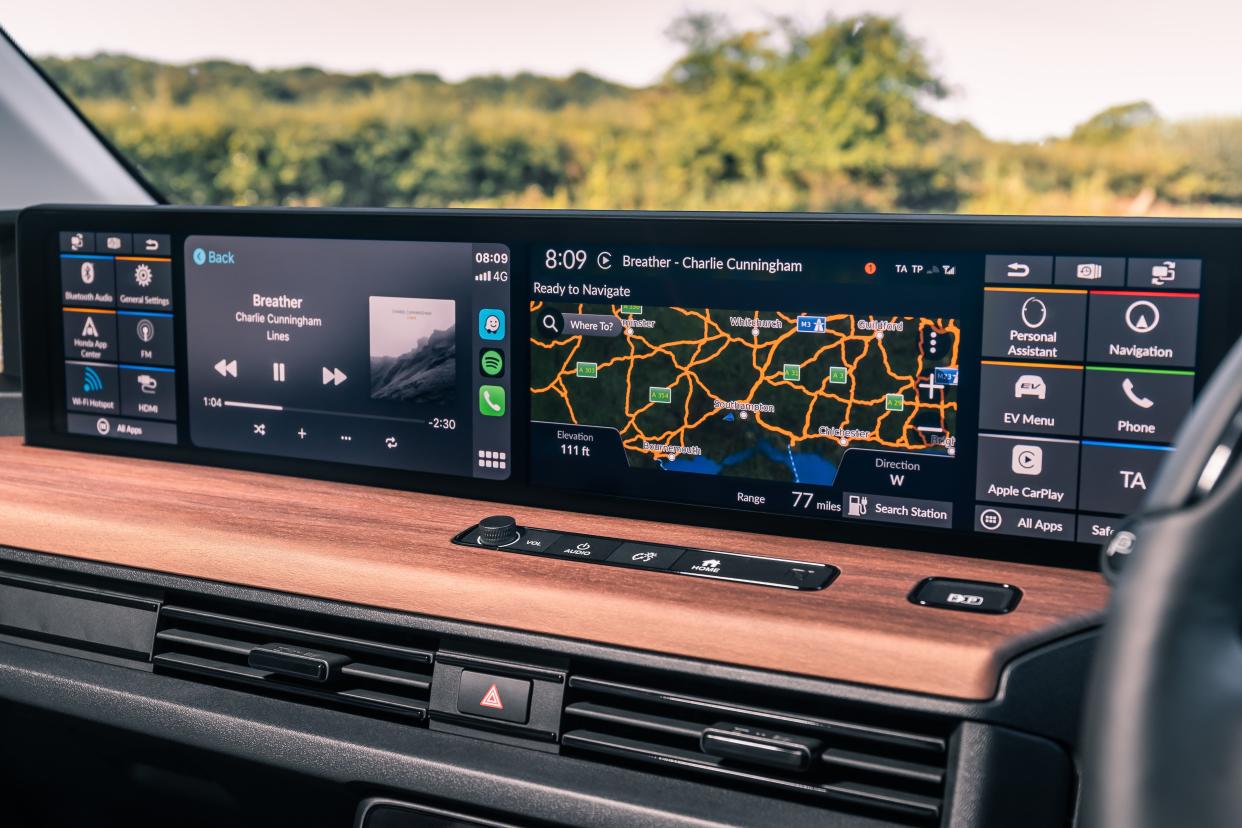
It’s when it comes to equipment that the e really moves things forward. It’s a car practically bristling with technology incorporated into nearly every area of the vehicle. The main infotainment setup, for instance, combines two 12.3-inch high-definition screens in the middle of the dashboard; in total, there are five screens. It’s here where you can access information about the car’s battery status, as well as media controls and satellite navigation. It operates much like a smartphone, with configurable panels making tailoring the display to your own needs easy. The passenger can also take control of the screens too.
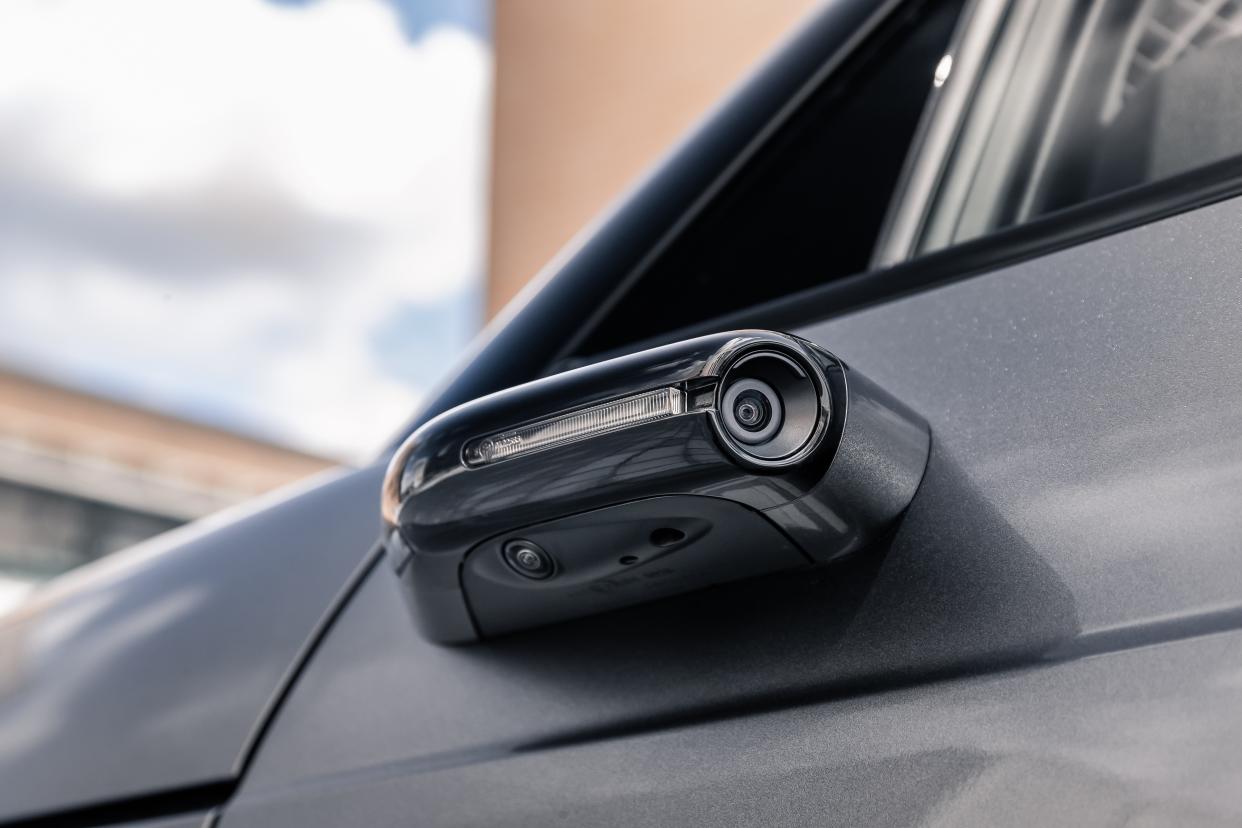
Then there are the side camera mirror systems, displayed via a screen inside the car on either side of the vehicle. These use cameras located on the outside of the vehicle to display an image of what’s behind to the cabin. In practice, it’s a system which works very well, and it’s not a feature which is reserved for tip-top versions – this is a bit of tech which all e models get, regardless of trim.
It’s an exceptional level of equipment and represents a genuine step-change in the segment.
Verdict
Given the amount of interest in the original concept, it could’ve been that the production Honda e arrived as a bit of a damp squib. However, that simply isn’t the case. It’s a groundbreaking little car, this, and one which will undoubtedly prove immensely popular. Yes, you could say that the range restricts it, but for those who want a car which is easy to nip here and there in – charging on the fly – then it more than fits the bill.
It’s simply so desirable as an object too, which is an attribute which rarely graces the EV segment. One thing is for sure – the e is going to prove to be a popular electric car option.
Model: Honda e
Model as tested: Honda e Advanced
Price as tested: £29,160
Engine:
Power: 113kW (151bhp)
Torque: 315Nm
Max speed: 100mph
0-60mph: 7.8 seconds
Range: 125 miles
Emissions: 0 g/km CO2


